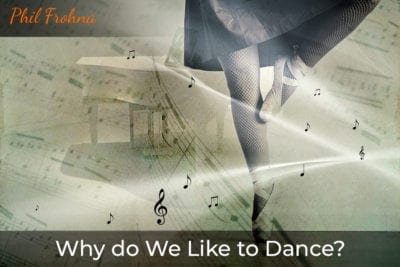 For some people, dance is fun and a pleasant pastime, for someone – a way to lose weight and gain flexibility, someone uses dance for self-expression. Some (more often psychologists) by the way a person dances can determine his personality characteristics and problems using dance as a diagnostic technique. For some women and men, dance is a tool for seduction.
For some people, dance is fun and a pleasant pastime, for someone – a way to lose weight and gain flexibility, someone uses dance for self-expression. Some (more often psychologists) by the way a person dances can determine his personality characteristics and problems using dance as a diagnostic technique. For some women and men, dance is a tool for seduction.
Are dances useful for health? Most answer “yes”, implying the use of physical exertion for certain muscles, spine, cardiovascular system, development of coordination and endurance. And they will be right. However, very few people know that dances can help in the prevention and treatment of mental imbalances, neuroses, the disclosure of internal resources, the knowledge of oneself and others through body language.
Anxiety, numerous fears, depression, unstable self-esteem, self-doubt, strong inner tension, neuroses – this is far from a complete list of problems of mental health of modern citizens. Most of the population prefers to run away from problems, rather than solve them (alcohol, talking in the kitchen with friends). Someone is running to a hobby, someone to work. The advanced part of the population, realizing the presence of these problems, appeals to a psychotherapist or psychologist. How do I help dance in overcoming mental disorders?
The influence of dance on the psyche has been noticed since primitive times, when with the help of ritual motions under the monotonous sounds of the first musical instruments a person introduced himself into an unusual resource state for achieving certain goals (hunting or war). At first, there was a monotonous rhythm that built the structure, helped to concentrate. With time, the rhythms became larger, and now there are a lot of them. Some of them help to relax, and some on the contrary activate and mobilize. It is no accident that at different times of life we like that music that resonates with our inner state.
Considering music and dance in the medical aspect, one can not help recalling that in traditional Chinese medicine (from the 3rd century BC to the present day) different musical instruments are used to treat bodily and mental disorders. This resonates with modern music therapy, when listening to certain musical compositions is offered for treatment. And if more specifically, then in psychotherapy there is a direction that works with the psyche through the body-oriented therapy. Dance-motor therapy combined the influence of music and dance on the human body.
The psychic and the body are interrelated: the more rigid the body, the more flexibility of thinking and, as a consequence, higher stress tolerance.
Dances have no age-related restrictions.
Dancing exercises increase the production of endorphins (pleasure hormones), which helps to cope with depressive states.
When a person dances, he realizes himself and others through the body, begins to feel his limitations and work with them. He learns to accept his body and the body of another, as a value that does not depend on form and appearance. It’s working with personal boundaries, realizing where my borders end and the boundaries of the other start. Thus, dances are very useful for working with the dependencies of any plan.
Dancing is a non-trivial level of communication, developing sensuality, sensitivity, intuition.
Dancing is a way to increase your energy level and reduce the level of internal tension.
Dancing is an indescribable pleasure, when the movements in a pair become harmonious, and in improvisation there is a sense of freedom and spontaneity.
For many barriers for dance are limiting beliefs (I fail, others dance better than I, with a body like mine is better not to dance, me will all laugh, I’ll look defective). These beliefs have nothing to do with reality.
Image Credit: cocoparisienne